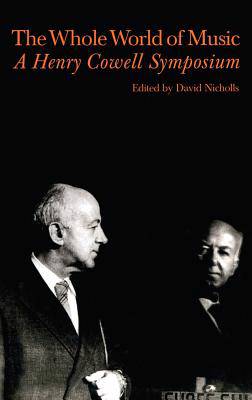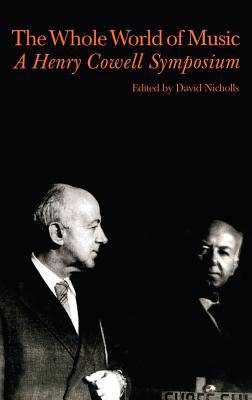
- Afhalen na 1 uur in een winkel met voorraad
- Gratis thuislevering in België vanaf € 30
- Ruim aanbod met 7 miljoen producten
- Afhalen na 1 uur in een winkel met voorraad
- Gratis thuislevering in België vanaf € 30
- Ruim aanbod met 7 miljoen producten
€ 290,45
+ 580 punten
Omschrijving
It is impossible to contain Henry Cowell within the boundaries of the consistencies of forms, styles, ensembles, and genres of Western art music. John Cage once described Cowell as the open sesame for new music in America. Of the thousand or so works catalogued by William Lichtenwanger, the majority are formally innovative single movement vocal or instrumental pieces, although there are 20 symphonies, five string quartets, and 8 suites of various kinds. Cowell was also innovative in his use of instruments from different cultures (jalatarang, dragonmouths, Japanese wind glasses, the shakuhachi flute) and in this book, Lou Harrison writes of Cowell's adventurous promotion of automobile junkyards for the finding of new sounds. In addition, Cowell was a tireless advocate of new music in the West, and Musics from other cultures worldwide, as a teacher, lecturer, publisher, and performer. He founded New Music Quarterly in 1927, wrote the influential book Ne In this major book of articles
Specificaties
Betrokkenen
- Uitgeverij:
Inhoud
- Aantal bladzijden:
- 260
- Taal:
- Engels
- Reeks:
Eigenschappen
- Productcode (EAN):
- 9789057550034
- Verschijningsdatum:
- 23/06/1998
- Uitvoering:
- Hardcover
- Formaat:
- Genaaid
- Afmetingen:
- 156 mm x 234 mm
- Gewicht:
- 544 g

Alleen bij Standaard Boekhandel
+ 580 punten op je klantenkaart van Standaard Boekhandel
Beoordelingen
We publiceren alleen reviews die voldoen aan de voorwaarden voor reviews. Bekijk onze voorwaarden voor reviews.









